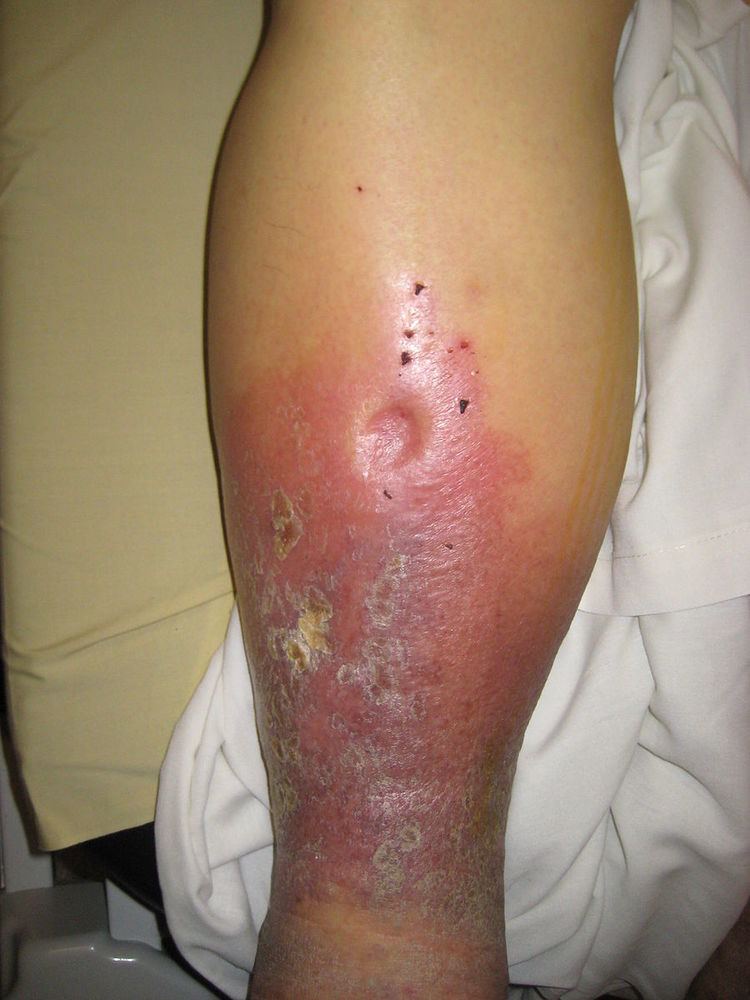 | ||
A peripheral vascular examination is a medical examination to discover signs of pathology in the peripheral vascular system. It is performed as part of a physical examination, or when a patient presents with leg pain suggestive of a cardiovascular pathology.
Contents
The exam includes several parts:
Position/Lighting/Draping
Position – patient should be lying in the supine position and the bed or examination table should be flat. The patient's hands should remain at her sides with her head resting on a pillow.
Lighting – adjusted so that it is ideal.
Draping – the legs should be exposed, the groin and thigh covered. Drapes are usually placed between the legs.
Inspection
On inspection the physician looks for signs of:
Palpation
Arterial pulses
Auscultation
Special maneuvers
With the patient supine, note the colour of the feet soles. They should be pink. Then elevate both legs to 45 degrees for more than 1 minute. Observe the soles. If there is marked pallor (whiteness), ischemia should be suspected. Next check for rubor of dependency. Sit the patient upright and observe the feet. In normal patients, the feet quickly turn pink. If, more slowly, they turn red like a cooked lobster, suspect ischemia.
One leg at a time. With the patient supine, empty the superficial veins by 'milking' the leg in the distal to proximal direction. Now press with your thumb over the saphenofemoral junction (2.5 cm below and 2.5 cm lateral to the pubic tubercle) and ask the patient to stand while you maintain pressure. If the leg veins now refill rapidly, the incompentence is located below the saphenofemoral junction, and vice versa. This test can be repeated using pressure at any point along the leg until the incompetence has been mapped out.
References
Peripheral vascular examination Wikipedia(Text) CC BY-SA
